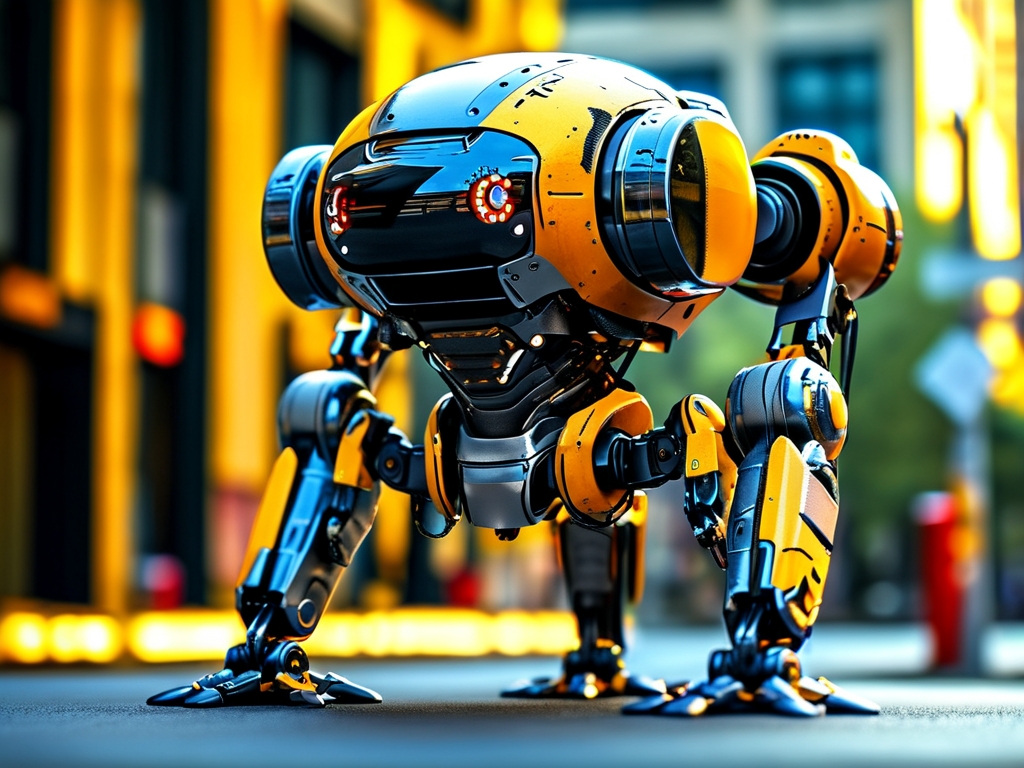Exoskeleton robotics, a field at the intersection of biomechanics, robotics, and artificial intelligence, has emerged as a transformative technology with applications spanning healthcare, military, industrial labor, and rehabilitation. While the promise of augmenting human capabilities—such as restoring mobility to individuals with paralysis or enhancing strength for heavy lifting—is undeniable, the path to widespread adoption is fraught with technical hurdles. This article explores the critical challenges facing exoskeleton robotics and the innovative solutions researchers are pursuing to overcome them.

1. Material Science and Mechanical Design
One of the most fundamental challenges lies in designing exoskeletons that are both lightweight and durable. Traditional robotic systems often rely on rigid metals or heavy actuators, which are impractical for wearable devices. Users require exoskeletons to be unobtrusive, comfortable, and energy-efficient. Advanced materials like carbon-fiber composites and shape-memory alloys are being tested to reduce weight while maintaining structural integrity. However, balancing flexibility (to accommodate natural human movement) with stiffness (to provide adequate support) remains a complex engineering puzzle. For example, a medical exoskeleton designed for spinal cord injury patients must mimic the subtlety of human gait without causing fatigue or discomfort over extended use.
2. Power Efficiency and Energy Storage
Exoskeletons demand significant power to operate actuators, sensors, and control systems. Current battery technologies often fall short in terms of energy density, leading to limited operational time—a critical drawback for industrial or military applications. Researchers are exploring hybrid solutions, such as energy harvesting from human motion (e.g., piezoelectric materials converting mechanical stress into electricity) or integrating fuel cells. Nevertheless, these approaches add complexity and cost. The ideal system would seamlessly combine high-capacity energy storage with minimal weight, a goal that remains elusive despite advances in solid-state batteries and supercapacitors.
3. Human-Machine Interaction and Control Systems
Achieving intuitive interaction between the user and the exoskeleton is perhaps the most nuanced challenge. Traditional control systems rely on preprogrammed algorithms or manual inputs, which lack the adaptability required for dynamic real-world environments. Modern solutions incorporate biosignal interfaces, such as electromyography (EMG) to detect muscle activity or brain-computer interfaces (BCIs) for direct neural control. However, signal noise, latency, and individual variability in biomechanics complicate these systems. Machine learning algorithms are being deployed to personalize exoskeleton responses, but training these models requires vast datasets and risks overfitting to specific user profiles.
4. Safety and Ethical Considerations
Safety is paramount, particularly in medical and industrial contexts. A malfunctioning exoskeleton could cause physical harm—for instance, by misinterpreting a user’s intent and triggering an abrupt movement. Redundant sensor systems and fail-safe mechanisms are essential, yet they increase design complexity. Ethically, questions arise about accessibility and equity. High costs currently limit exoskeletons to niche markets, raising concerns about whether this technology will exacerbate societal inequalities. Regulatory frameworks are lagging, with few standardized guidelines for safety testing or performance benchmarks.
5. Integration with Existing Infrastructure
For exoskeletons to gain traction in industries like manufacturing or logistics, they must integrate seamlessly with existing workflows and technologies. This requires interoperability with IoT devices, ergonomic compatibility with tools and machinery, and minimal training overhead. Collaborative robots (cobots) are paving the way, but exoskeletons face unique hurdles due to their direct physical interaction with humans. Standardizing communication protocols and ensuring cybersecurity in networked systems add further layers of complexity.
Innovative Approaches and Future Directions
Despite these challenges, breakthroughs are occurring at a rapid pace. Soft robotics, for instance, replaces rigid components with pneumatic or tendon-driven systems, enabling more natural movement. Companies like Ekso Bionics and ReWalk are commercializing medical exoskeletons, while startups like Sarcos Robotics focus on industrial strength augmentation. Collaborative efforts between academia and industry are critical, as seen in DARPA’s Warrior Web program, which aims to develop lightweight exoskeletons for military use.
Looking ahead, the convergence of AI, nanotechnology, and advanced manufacturing could revolutionize exoskeleton design. For example, self-healing materials might reduce maintenance needs, while edge computing could enable real-time adaptive control without relying on cloud infrastructure. The ultimate goal is to create exoskeletons that feel like a natural extension of the human body—responsive, reliable, and accessible to all.
The journey to perfecting exoskeleton robotics is as much about overcoming technical barriers as it is about redefining human potential. While challenges in materials, energy, control systems, safety, and integration persist, the collaborative efforts of engineers, scientists, and policymakers are driving progress. As these hurdles are addressed, exoskeletons will transition from experimental prototypes to mainstream tools, empowering individuals and reshaping industries in ways we are only beginning to imagine.

